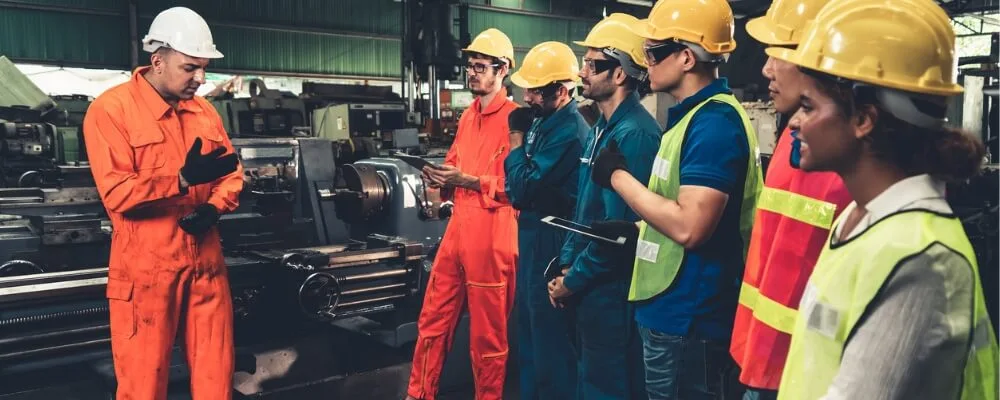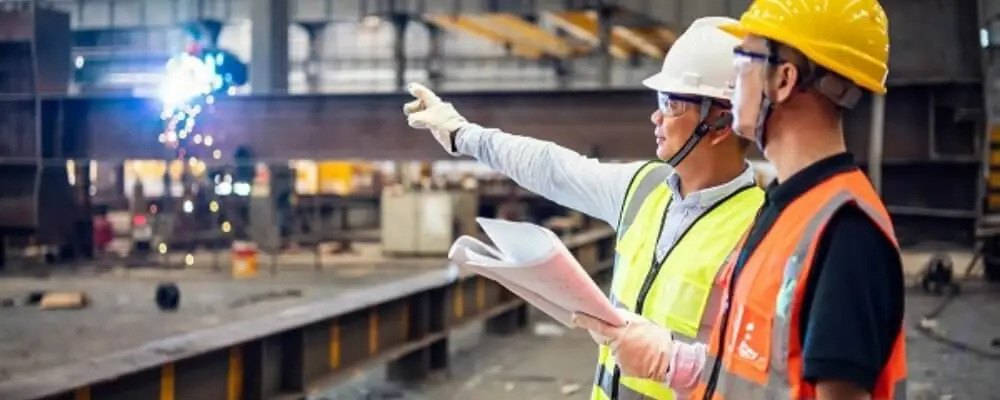In today’s fast-paced and ever-evolving work environment, ensuring the safety of employees stands paramount for businesses across all industries. While technology, processes, and workplace cultures continue to evolve, so do the challenges associated with keeping everyone safe. From the tangible hazards posed by machinery and chemicals to the often-overlooked stresses and strains of modern professional life, the landscape of workplace safety is broad and complex.
This blog will explore the top 10 workplace safety challenges organizations face today. By understanding these challenges, businesses can better equip themselves to foster a work environment where safety isn’t just a priority but a fundamental pillar of operation.
Workplace Safety Challenges
Workplace safety challenges refer to the work environment’s obstacles, issues, or potential hazards that can jeopardize employees’ health, safety, or well-being. These challenges can arise from physical dangers, like machinery or chemicals, and intangible factors, such as organizational culture or mental health stressors.
Addressing these challenges requires identifying the risks, implementing appropriate safety measures, and fostering a culture that prioritizes the well-being of its workforce. The ultimate goal is to ensure that employees can perform their tasks in an environment that minimizes the potential for accidents, injuries, or long-term health issues.

Identifying and addressing safety challenges in the workplace is crucial for various reasons, all aiming to protect employees and ensure business continuity:
- Preservation of Human Life and Health: The most paramount reason is the sanctity of human life. Injuries or fatalities at the workplace can have devastating and irreversible effects on employees and their families. By actively identifying and addressing safety challenges, potential hazards can be mitigated, reducing the risk of serious accidents.
- Legal and Compliance Implications: Employers must provide a safe work environment. Regulatory bodies worldwide have set standards that businesses must adhere to. Failure to comply can result in severe penalties, fines, or even business closure.
- Financial Impact: Accidents can be costly for businesses. There are direct costs, such as medical expenses and compensation, and indirect costs, such as equipment damage, operational downtimes, and increased insurance premiums. Preventing accidents through proactive measures is often more cost-effective in the long run.
- Employee Morale and Productivity: A safe work environment boosts employee morale. Employees who feel that their well-being is a priority are more likely to be satisfied, motivated, and productive. Conversely, frequent accidents can create an atmosphere of fear and anxiety, leading to decreased productivity and higher turnover rates.
- Business Reputation: Regular incidents can tarnish a company’s reputation, challenging attracting and retaining talent. A poor safety record might also deter clients or partners who prioritize safety and ethical business operations. In contrast, a strong safety culture can be a unique selling point, building stakeholder trust.
- Reduced Absenteeism: Injuries or health issues arising from safety challenges can lead to employees taking time off. This absenteeism can disrupt operations, especially in sectors where specialized skills are required. Businesses can ensure continuity and reduce unplanned absences by ensuring a safe environment.
- Promotion of a Proactive Culture: Addressing safety challenges often requires a proactive approach – predicting and preparing for potential issues rather than merely reacting to them. This proactive mindset can spill over to other business areas, leading to increased efficiency and innovation.
- Long-term Employee Health: Some safety challenges, especially those related to ergonomics or chronic exposure to certain elements, might not result in immediate accidents but can affect long-term employee health. Addressing these ensures that employees do not face health issues down the line, which can be a significant liability for businesses.
In conclusion, identifying and addressing safety challenges is important beyond merely preventing accidents. It is an integral aspect of responsible business operations, with implications for financial health, employee well-being, and overall business sustainability.

Top 10 Workplace Safety Challenges In The Workplace
Workplace safety is a major concern for businesses across industries. Here are the top 10 workplace safety challenges often encountered:
1. Lack of Training
In many work environments, many accidents result from employees not being sufficiently trained to handle the tools, machinery, or processes they encounter. Such insufficient training can stem from tight budgets, rapid onboarding, or simply an oversight in management. This lack of knowledge can be especially hazardous in industries where equipment is complex or inherently dangerous.
Without proper training, employees may unknowingly engage in risky behaviors or use equipment incorrectly. To mitigate this, companies must invest in comprehensive training programs that are updated regularly and tailored to the unique needs of their workplace.
2. Inadequate Personal Protective Equipment (PPE)
Personal Protective Equipment serves as the last line of defense against potential hazards in the workplace. When employees lack access to the correct PPE or are not educated on its proper usage, their risk of injury or exposure to harmful substances significantly increases. This inadequacy can be due to budget constraints, negligence, or supply chain issues.
Employers must conduct risk assessments to determine necessary PPE and ensure it’s available and in good condition. Moreover, employees should be educated on the importance of using PPE consistently and correctly.
3. Falling Hazards
One of the most prevalent causes of workplace injuries is falls. These can range from simple trips over misplaced items to more severe falls from heights in construction or warehouse settings. Sometimes, even a minor oversight, like an unplugged cord or a wet floor, can result in serious injury.
Employers should establish strict housekeeping standards and conduct regular inspections to minimize the risk. Additionally, workplaces with elevated workspaces should have guardrails, signage, and fall protection gear, alongside training sessions on navigating such environments safely.

4. Ergonomic Challenges
How employees interact with their work environment is crucial to their well-being. Repetitive motions, such as typing, assembly line work, or even sitting for prolonged periods, can lead to musculoskeletal disorders. The challenge often lies in recognizing these hazards because the harm they cause accumulates over time rather than from a single incident.
Addressing ergonomic challenges involves redesigning workstations, providing ergonomic equipment, and educating employees on proper postures and break habits. It’s also beneficial to rotate tasks when possible to minimize repetitive strain.
5. Poor Housekeeping
A disorganized workplace isn’t just an eyesore; it’s a safety hazard. Clutter can obstruct pathways, hiding hazards like spilled liquids or tools. Over time, negligence in housekeeping can create an environment where accidents are just waiting to happen.
Proper housekeeping goes beyond simple cleanliness. It includes organizing tools and materials, ensuring clear walkways, and promptly addressing spills or debris. Regular audits and a culture that values tidiness can significantly reduce the risks of poor housekeeping.
6. Chemical Exposure
Workplaces that handle or store chemicals face the inherent risk of their workforce being exposed to these substances through direct skin contact, inhalation of fumes, or accidental ingestion. The potential dangers can range from mild irritations to severe health complications, including respiratory problems and chemical burns. Mitigating these risks requires meticulous attention to detail. All chemicals should be clearly labeled with their contents and associated dangers.
Proper storage protocols must be in place, often requiring specific temperatures or containment methods. Furthermore, proper handling guidelines should be established and adhered to, ensuring workers use appropriate PPE when interacting with chemicals. Additionally, workplaces should be equipped with adequate ventilation systems to disperse harmful fumes and reduce the risk of inhalation.

7. Electrical Hazards
Electrical systems are ubiquitous in modern workplaces, powering everything from lights to sophisticated machinery. However, when these systems are not appropriately maintained or used, they pose a significant risk. Faulty wiring can lead to fires, overloaded circuits might result in power outages or equipment damage, and the misuse of electrical equipment can cause electrocution.
Regular inspections of electrical systems, training employees on the correct use of electrical equipment, and instilling respect for electrical safety protocols are vital in preventing accidents related to these hazards.
8. Lack of Emergency Preparedness
While no one likes to think of worst-case scenarios, failing to prepare for emergencies can have dire consequences. Without a well-structured and practiced emergency response plan, even minor incidents can spiral out of control, leading to injuries, property damage, or even loss of life.
Employers must develop comprehensive plans covering various potential emergencies, from fires to natural disasters. These plans should detail evacuation routes, assembly points, and procedures for aiding injured employees. Moreover, regular drills should ensure all employees are familiar with these procedures, reducing panic and confusion during an emergency.
9. Mental Health and Stress
The modern workplace is a space of physical labor and a hub of cognitive and emotional activity. If not addressed, mental health challenges can manifest in various ways, affecting the organization’s individual and collective productivity. Chronic stress can lead to burnout, reduced job satisfaction, and an increased likelihood of mistakes.
Employers are responsible for fostering a supportive environment where employees feel valued and heard. This includes addressing potential sources of workplace stress, providing resources for mental health support, and encouraging open dialogues about well-being.

10. Inadequate Reporting and Communication
Effective communication is the backbone of a safe work environment. When employees do not have a clear channel to report safety concerns or incidents, many potential hazards may go undetected until too late. An opaque or intimidating reporting system can deter individuals from voicing their concerns.
Hence, companies must ensure transparent, accessible, and non-punitive mechanisms for employees to report issues. Regular feedback loops and open-door policies can also foster a culture of open communication, allowing problems to be identified and rectified promptly.
Conclusion
Modern workplace dynamics are ever-changing, making safety both intricate and essential. The spectrum of workplace safety challenges is vast, from the physical dangers posed by equipment to the silent pressures of mental stress. By recognizing and addressing these top 10 challenges, businesses can protect their most valuable asset – their employees – and foster a culture of responsibility, care, and diligence.
As we progress in this era of rapid innovation and progress, remember that safety should always remain at the forefront of our endeavors. After all, a safe workplace is not only a productive one but also a testament to an organization’s commitment to its people.

